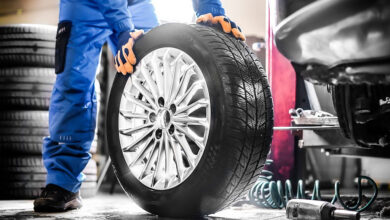Why Are Ceramic Abrasives Considered a Green Alternative in the Sanding Industry?

The sanding industry has seen a shift toward sustainable practices in recent years, with ceramic abrasives becoming a popular choice among professionals. These abrasives are favored not only for their superior performance but also for their environmental benefits. Ceramic abrasives from Benchmark Abrasives are known for their durability and efficiency, which reduces waste and energy consumption. Compared to traditional abrasives, they last longer and need to be replaced less frequently. This longevity translates into less material waste and a lower carbon footprint. Furthermore, the production process of ceramic abrasives is often cleaner, relying on fewer harmful chemicals and generating fewer emissions. These factors combine to make ceramic abrasives a greener alternative in the sanding industry.
Understanding Ceramic Abrasives
Ceramic abrasives are made from a crystalline structure that provides exceptional hardness and toughness. They are designed to grind and sand materials like wood, metal, and composites with precision. Unlike conventional abrasives such as aluminum oxide or silicon carbide, ceramic abrasives offer a more aggressive cut while maintaining a cooler operating temperature. This reduces the risk of heat damage to the material being worked on. The unique micro-crystalline structure of ceramic grains also allows them to self-sharpen during use. This self-sharpening capability means that the abrasive stays sharper for a longer period, resulting in a consistent performance throughout its lifespan.
Durability and Efficiency
One of the key benefits of ceramic abrasives is their durability. They are engineered to withstand high-pressure applications without breaking down quickly. This durability means that fewer abrasives are needed for a project, leading to less waste. When fewer abrasives are consumed, there is a reduction in the need for manufacturing new products, which in turn decreases the environmental impact. The efficiency of ceramic abrasives also plays a role in making them a greener choice. They remove material faster than many traditional abrasives, which reduces the amount of time and energy required for sanding tasks. This efficiency not only saves resources but also enhances productivity in industrial settings.
Reduced Waste and Environmental Impact
The longevity of ceramic abrasives leads to less frequent replacement and disposal. Traditional abrasives, which wear down faster, often end up in landfills. This contributes to the growing problem of industrial waste. On the other hand, ceramic abrasives reduce the volume of waste generated. Fewer used abrasives mean less material is discarded, and less packaging waste is created. In addition, the production of ceramic abrasives generally involves fewer harmful chemicals, which means fewer toxic byproducts are released into the environment. This cleaner production process contributes to a more sustainable sanding industry by minimizing pollution and conserving natural resources.
Lower Energy Consumption
Energy consumption is another critical factor in the environmental impact of abrasives. The production and use of ceramic abrasives require less energy compared to some traditional alternatives. Since ceramic abrasives are more efficient and durable, they reduce the overall energy needed for both manufacturing and application. In industrial applications, where large-scale sanding is common, the energy savings can be significant. Reduced energy consumption directly translates to lower greenhouse gas emissions. By choosing ceramic abrasives, companies can not only improve their operational efficiency but also make a positive contribution to environmental conservation efforts.
Benefits to Health and Safety
Ceramic abrasives also offer health and safety benefits that align with sustainable practices. Traditional abrasives can produce more dust and debris when they wear down, which can be harmful to workers’ health if inhaled. Ceramic abrasives, with their longer lifespan and cooler cutting action, tend to generate less dust. This creates a safer and cleaner working environment, reducing the need for additional protective measures or dust extraction systems. By minimizing dust and debris, ceramic abrasives help improve indoor air quality, contributing to healthier workplaces. Cutting down on air pollution helps people who work in these areas. It also means spending less on equipment to clean the air.
Ceramic abrasives are suitable for sanding because they last longer, work better, and are kinder to the environment. They offer a more sustainable option for businesses looking to improve their sanding processes while minimizing their carbon footprint. By lasting longer and performing better than traditional abrasives, ceramic options help reduce waste, lower energy consumption, and promote cleaner production methods. They also contribute to safer working conditions by generating less dust and debris. As industries continue to prioritize sustainability, ceramic abrasives stand out as a responsible choice for companies committed to greener practices. The shift toward these advanced abrasives reflects a broader trend in the industry towards environmentally friendly solutions, ensuring a positive impact on both the planet and business operations.






